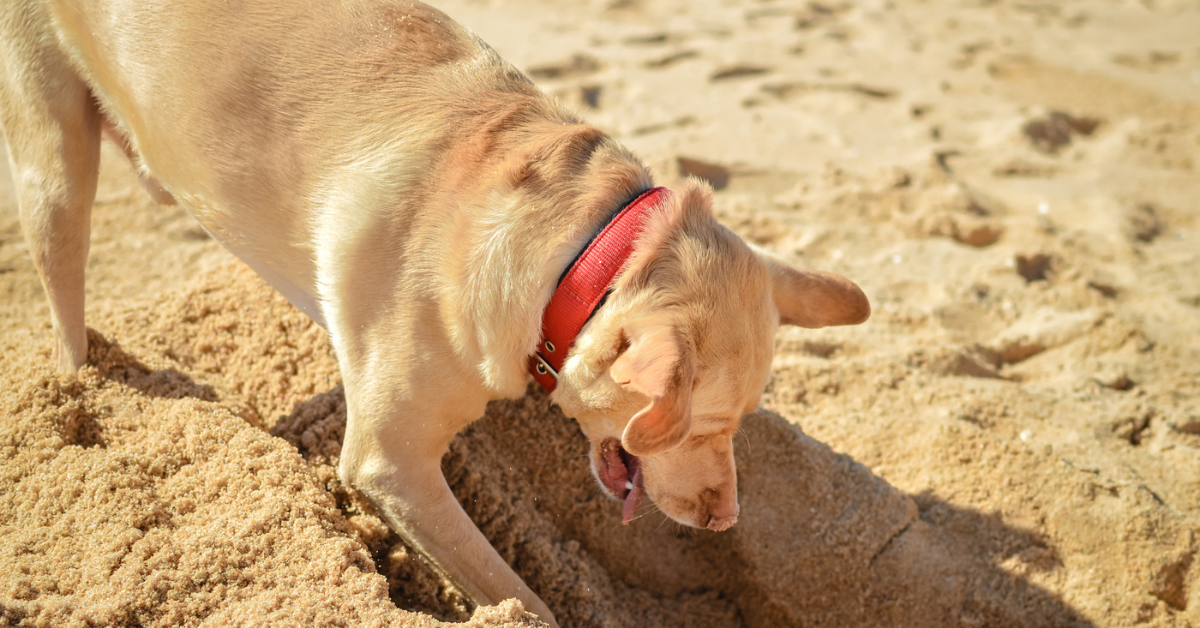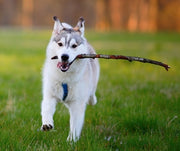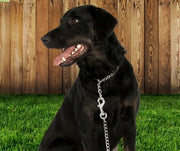Why Does My Dog Bury or Hide His Toys?

Have you ever caught your dog desperately digging and scratching a hole or even an imaginary hole – in the bed, blanket, or couch – inside, with a devious look on his face? If so, you're not alone, as pet parents nationwide have probably experienced this phenomenon at least once in their dog's presence. So, what's all the fuss about? If you're like many pet parents, you shower your pets with abundant toys and treats, but why would there be any reason for him to try to bury or hide his toys?
Historical and Evolutionary Perspective
Dogs have inherited many behaviors from their wild ancestors. Wild dogs and wolves often bury food to keep it safe for later. This instinct helped them survive when food was scarce. By burying items, they ensured their next meal would be hidden from other animals.
Survival Instincts
This instinct to bury food and other prized possessions is deeply rooted in their survival strategies. Wild dogs had to protect their resources from other animals and environmental factors. Burying bones and excess food allowed them to return to their stash when hunting was tough. This behavior ensured they always had a reserve.
Natural Instincts in Modern Dogs
Modern, domesticated dogs continue to show these instinctual behaviors. Though most dogs have enough food and do not need to bury things for survival, the behavior persists. Dogs often hide toys, bones, and treats in various places like couch cushions or the yard. Even in a comfortable home, a dog may bury things to protect certain items and feel secure.
Understanding why dogs bury or hide their toys helps pet owners address these behaviors properly. It’s part of their instinctual behavior and is often seen in pets that have more toys than they know what to do with. By recognizing this, owners can better manage their dog’s environment and reduce unnecessary hiding or digging.
Psychological Reasons
Security and Comfort
Dogs often bury toys to feel secure. Just as wild dogs bury food to keep it safe, domesticated dogs' hiding habits create a sense of security. When your furry friend tucks a toy under couch cushions or in the laundry basket, they are following this natural instinct. This behavior helps them feel that their prized possessions are protected and available for later use.
Possessiveness
Another reason why dogs bury things is possessiveness. The natural behavior of dogs can be very protective of their belongings. By hiding toys, they ensure that other dogs or humans can’t take them away. This behavior is more common in households with multiple pets. The dog hides toys to keep them safe from other dogs, acting instinctively to guard their resources.
Play and Simulation

Hiding toys can also be a form of play and mental stimulation for dogs. Dogs have a lot of energy and need activities to keep their minds sharp. Burying things like chew bones or favorite toys provides physical and mental exercise. It keeps dogs engaged and prevents destructive behavior caused by boredom or excess energy. When a dog brings out hidden toys later, it’s like finding a treasure, adding to their excitement and playtime.
Environmental Influences
Living Conditions
A dog’s home environment can significantly influence its behavior. If a dog feels threatened or insecure, it may start hiding toys to create a sense of safety. Dogs often choose hiding places under the bed or couch cushions to store their possessions. This behavior is similar to how wild dogs bury food to protect it. In homes with too many toys, dogs might hide things to manage their space and feel more in control.
Interaction with Owners
The way owners interact with their dogs can also impact hiding behavior. If a dog feels neglected or lacks attention, it might start hiding toys to cope with the situation. Dogs with plenty of positive interaction and playtime are less likely to develop such hiding habits. Consistent engagement and playing with toys together can reduce the need for dogs to hide them. The American Kennel Club and many professional dog trainers support this approach.
Boredom and Enrichment

Boredom is a common reason why dogs hide their toys. Without enough mental and physical stimulation, dogs may engage in hiding as a form of self-entertainment. Providing a variety of toys and regular playtime can keep a dog’s mind active. These include:
These can help burn off excess energy and prevent destructive behavior. Ensuring dogs have enough enrichment can reduce their instinctual behavior of hiding things.
Behavioral Issues
Anxiety and Stress
Dogs often hide toys when they feel anxious or stressed. This behavior can manifest when there are changes in their environment, such as moving to a new house or the arrival of a new pet. Dogs might also hide things if they sense tension or conflict at home. Hiding toys provides them with a sense of security and control. To help reduce this anxiety, provide a stable and calm environment and ensure your furry friend gets plenty of attention and exercise.
Resource Guarding
Resource guarding is when dogs hide items because they feel the need to protect them. This behavior goes beyond the normal instinct to hide toys. If a dog growls or snaps when someone approaches their hiding place, this is a sign of resource guarding. Addressing this issue early is essential, as it can lead to more aggressive behaviors. Working with a professional dog trainer can help manage and reduce resource guarding by teaching the dog that their possessions are safe and do not need to be protected aggressively.
Medical Concerns
Sometimes, hiding behavior can be linked to medical issues. If your dog suddenly starts hiding toys or other items excessively, it might be a sign of a health problem. Certain conditions can cause changes in behavior like:
- Pain
- Cognitive dysfunction
- Hormonal imbalances
If you notice a sudden change, it’s best to consult a veterinarian. Regular check-ups can help catch any underlying health issues early and ensure your dog stays healthy and happy.
Nurturing Your Dog's Natural Instincts
Understanding why your dog buries or hides its toys can provide insights into its instincts and behaviors. It’s a way for your furry friend to protect items for later use, similar to how wild dogs hide food to consume when resources are scarce. However, consulting a professional dog trainer can help curb this habit if it becomes problematic, such as constant digging or destructive behavior.
Providing your dog with appropriate outlets for this behavior, like chewing bones or toys, and reducing excess energy through regular exercise can help manage these instincts. Remember, this instinctual behavior is a part of what makes your dog unique. For premium pet supplies to support your pet's natural habits, visit Petmate today.Previous article

Next article

Related posts
View all-

What Can You Use Instead of Cat Litter?
Traditional cat litter is convenient, but it’s not the only option. Many cat owners look for alternatives to reduce waste, save money, or avoid chemicals found in clay-based kitty litter. Some options offer better odor control, while others are more eco-friendly or gentler on a cat’s paws.
Read Article -

How to Keep My Backyard Smelling Fresh
A clean backyard should smell fresh, unlike pet waste, smoke, or mold. Bad smells can linger, especially when dog poop, urine, or food scraps attract flies and bacteria. If your yard has a foul odor, it's time to take action. The first step is cleaning up pet feces, trash, or rotting food. A garden hose can wash away dirt and urine from artificial turf, patios, and decks. To neutralize odor, Use baking soda, white vinegar, and essential oils.
Read Article -

What Supplies Do First-Time Cat Owners Need?
Bringing home a new cat is exciting, but making them feel safe and comfortable takes more than love. First-time cat owners must prepare with the right supplies to ensure a smooth transition. From a litter box to cat food and a warm bed, having the basics ready can help your new kitty settle in faster. This guide covers everything a new cat owner needs to make their new pet feel at home.
Read Article



